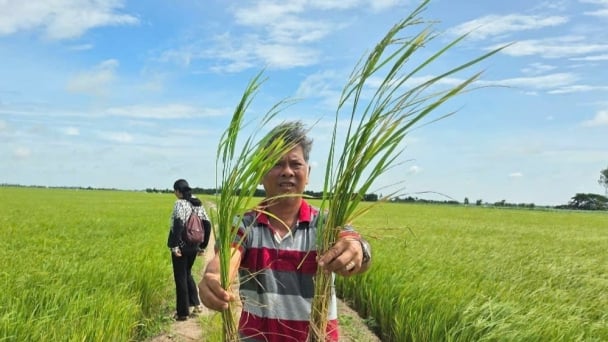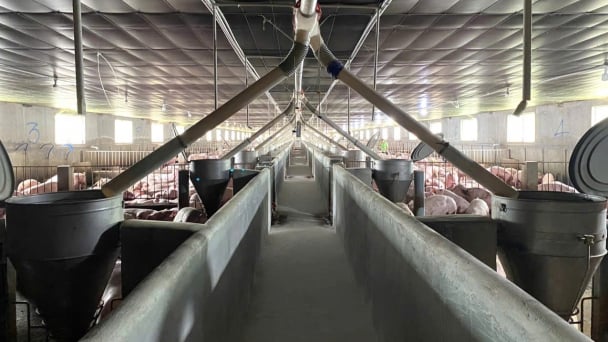September 1, 2025 | 02:38 GMT +7
September 1, 2025 | 02:38 GMT +7
Hotline: 0913.378.918
September 1, 2025 | 02:38 GMT +7
Hotline: 0913.378.918

Several of Canada’s most-prominent poultry researchers are launching new projects span topics including avian influenza, embryo and chick activity, and antibiotic alternatives. Photo: Marcel Rob.
These projects, all based at University of Guelph in Ontario, span a wide range of areas, including avian influenza, embryo and chick activity, antibiotic alternatives, feed additives and disinfection of eggs at hatcheries.
Dr Shayan Sharif will study how to reduce the spread of avian influenza in the face of a changing climate. Sharif will also conduct a separate project with Dr Joshua Gong at Agriculture and Agri-food Canada (AAFC) to explore whether certain bacteria may help control chicken diseases by blocking cell-to-cell communication that fuels intestinal disease development.
Some chicken embryos kick their legs and move their wings more than others, but we don’t know why – nor whether this leads to better physical development post-hatch. Dr Alexandra Harlander, one of Canada’s most-prominent poultry behaviour and welfare scientists, is tackling these questions. She will also investigate with colleagues whether, in cage-free housing, training chicks or allowing them to learn by observing and interacting with older birds can enhance their physical development and/or navigation of the barn environment.
As the search continues for ways to decrease or eliminate antibiotics, Dr Nicole Ricker will explore the use of bacteriophages (viruses that can only infect bacterial cells), administered alone or with gut-modifying feeds, can be used as potential alternatives to antibiotics for battling Salmonella infections in poultry. Ricker will work in collaboration with Dr Hany Anany at AAFC.
With his new funding, Dr Elijah Kiarie will work with AAFC colleagues to evaluate fruit pomaces (by-products from fruit processing that include skin, pulp, seeds, stems) as potential feed ingredients to enhance bird health, performance and food safety. Kiarie is also receiving new funding to measure the amounts of nitrogen-containing gases produced by chickens in broiler houses and develop strategies to reduce these outputs, as well as nutrient losses. This is accomplished by designing feed formulas that optimise protein utilisation.
Biochar has been studied in Canada for many years for use as a soil amendment and more. It’s a carbon-rich, petroleum-free material produced by pyrolysis (heating materials in the absence of oxygen). Dr Animesh Dutta, engineering professor and founding director of the Bio-Renewable Innovation Lab, will develop a thermochemical process for generating biochar from poultry litter.
Dutta will also work in collaboration with scientists at AAFC and McGill to study how climate change impacts the gut health of poultry and explore innovative uses for valuable compounds found in litter.
Disinfection of eggs in hatcheries can be done in different ways. Food science researcher Dr Keith Warriner has received funding to explore the use of antimicrobial gas-phase hydroxyl radicals for cleaning not just eggs but also egg crates, trays and other surfaces in the hatchery.
(Poultryworld)
/2025/08/31/4433-3-134030_475.jpg)
(VAN) After 15 years of implementation, payments for forest environmental services have created a stable source of income, helping thousands of households and indigenous communities stick more with forests.
/2025/08/30/3629-3-183157_351.jpg)
(VAN) Prof. Dr. Phan Sy Ky, former Deputy Minister of Agriculture and Rural Development, affirmed, 'Never before has the irrigation sector had such a career and confidence as it does today.'
/2025/08/30/5239-5-024833_424.jpg)
(VAN) With the construction of the 'great canal' to channel freshwater and irrigation sluice and dike systems, the once acidic and alum-contaminated lands of Dong Thap Muoi and the Long Xuyen Quadrangle have revived.
/2025/08/29/5326-0-nongnghiep-105322.jpg)
(VAN) From a few hundred million USD in the late 1990s, Vietnam's wood exports have soared to USD 15 billion in 2025, affirming its status as a global powerhouse in wood processing and furniture manufacturing.

Instead of burning, microbial technology helps farmers turn millions of tons of straw into organic fertilizer, saving costs and protecting the environment.
/2025/08/28/5450-5-164042_320.jpg)
(VAN) From the risk of complete forest loss after the war, Vietnam has restored forest cover to more than 42%, becoming an international bright spot in forestry and sustainable development.

(VAN) Facing the risk of ASF outbreaks, Tay Ninh has strengthened disease prevention, and many farms have set up 'biological shields' to stabilize production.